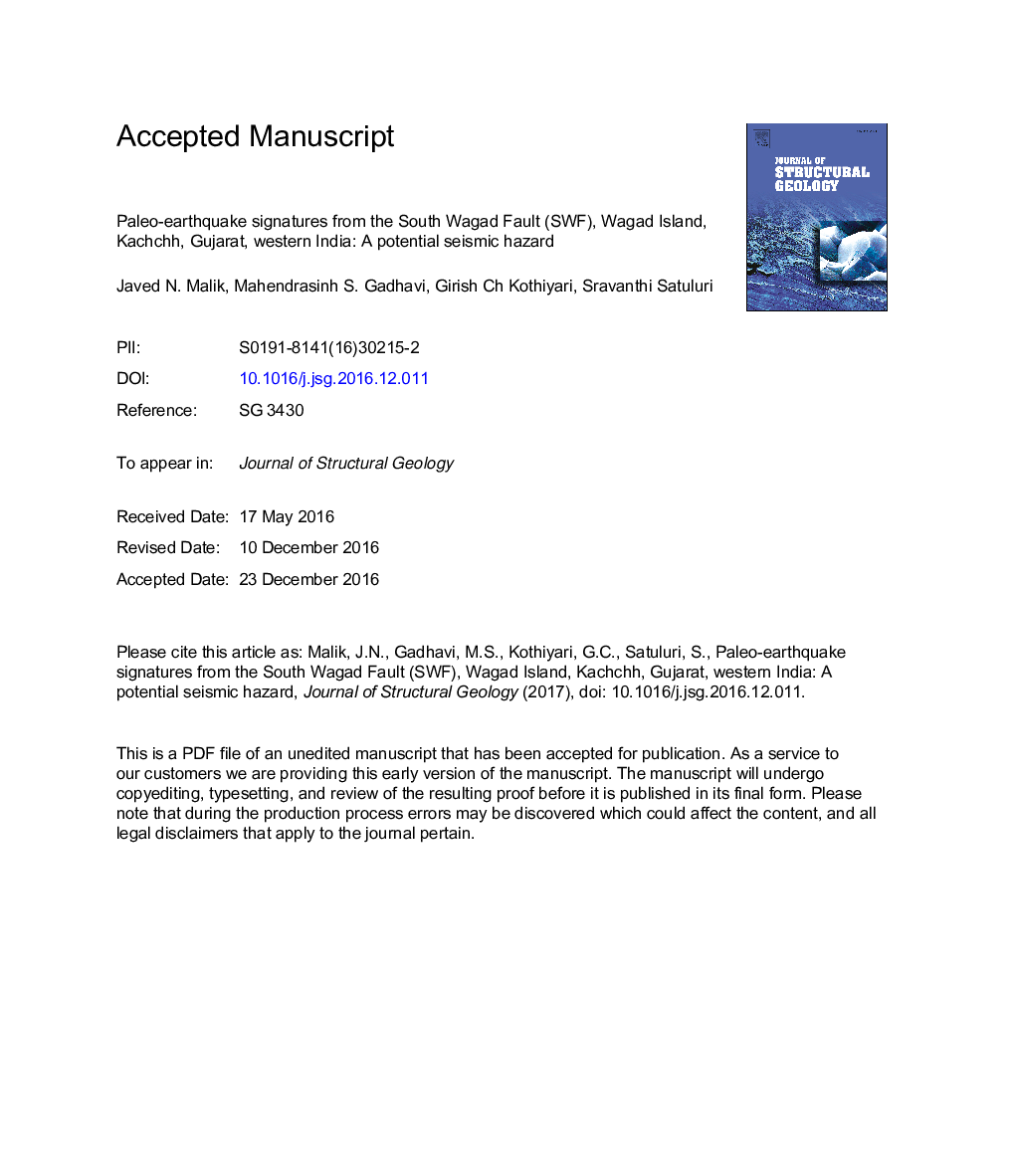| Article ID | Journal | Published Year | Pages | File Type |
|---|---|---|---|---|
| 5786365 | Journal of Structural Geology | 2017 | 62 Pages |
Abstract
In last 500 years, Kachchh experienced several large magnitude earthquakes (6.0 â¥Â M â¤Â 7.8), however, not all accompanied surface rupture. The 1819 Allah Bund earthquake (Mw7.8) accompanied surface rupture, whereas, the 2001 Bhuj event (Mw7.6) occurred at a depth of 23 km on E-W striking south dipping thrust fault remained blind. Discontinuities between the denser-brittle basement (?) and overlying ductile-softer Mesozoic-Tertiary-Quaternary succession resulted in a different geometry of faulting. Normal faults associated with rift were reactivated as reverse faults during inversion tectonics, propagated in sedimentary succession and arrested. Thrust-ramps developed along the discontinuities accompanied surface ruptures. Folded structures along the South Wagad Fault (SWF) - an active thrust, exhibits lateral-propagation of fold segments and linkage, suggestive of fault-related-fold growth. Paleoseismic investigations revealed evidence of at least three paleo-earthquakes. Event I occurred before BCE 5080; Event II between BCE 4820 and 2320, and was probably responsible for a massive damage at Dholavira - Harappan site. Event III was between BCE 1230 and 04, most likely caused severe damage to Dholavira. Archaeo-seismological Quality Factor (AQF) of 0.5 suggests that the Dholavira is vulnerable to earthquakes from nearby active faults. With 1500-2000 yr of recurrence interval, occurrence of a large magnitude earthquake on SWF cannot be ruled out.
Related Topics
Physical Sciences and Engineering
Earth and Planetary Sciences
Geology
Authors
Javed N. Malik, Mahendrasinh S. Gadhavi, Girish Ch Kothyari, Sravanthi Satuluri,
